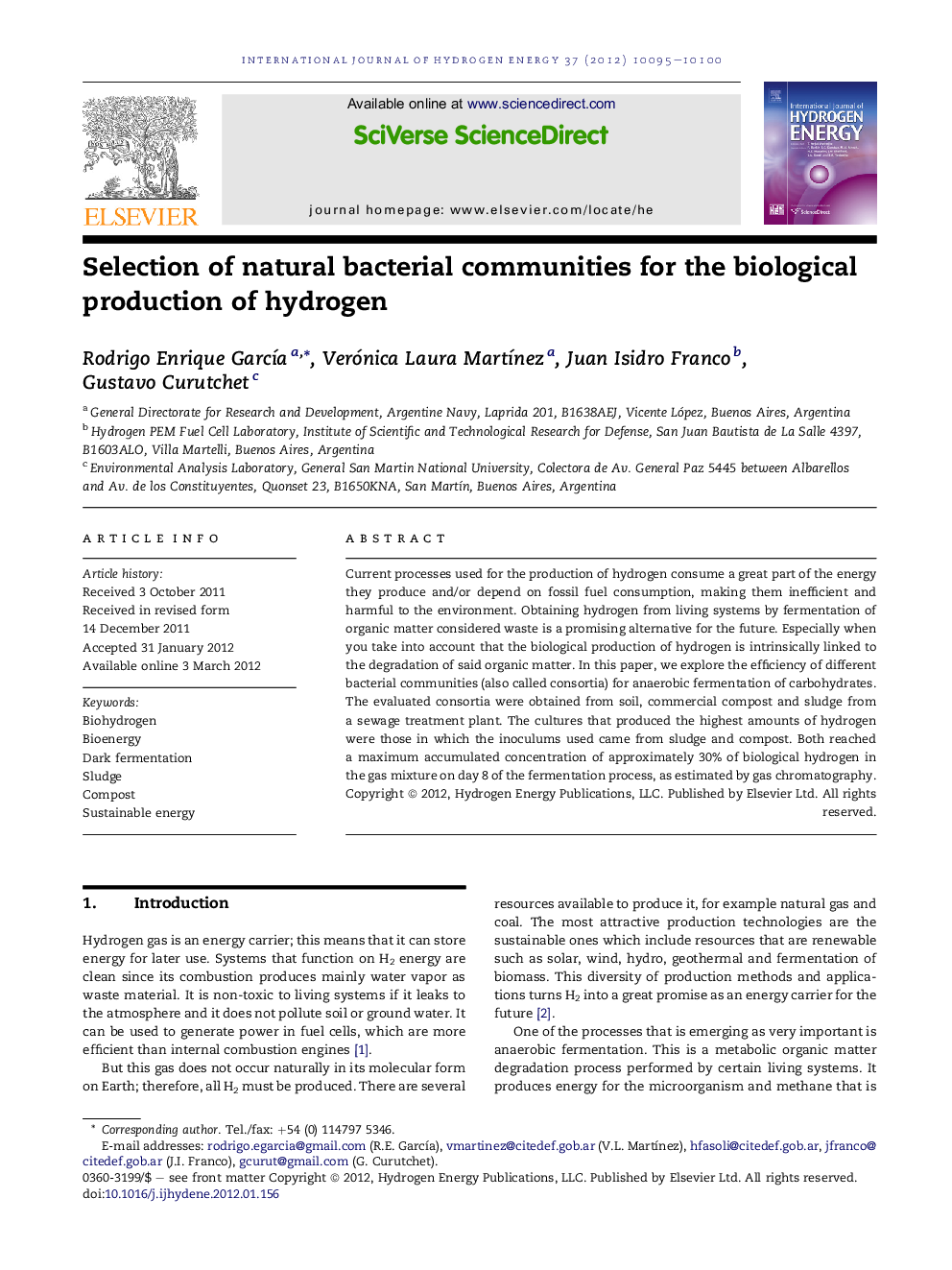| Article ID | Journal | Published Year | Pages | File Type |
|---|---|---|---|---|
| 1275195 | International Journal of Hydrogen Energy | 2012 | 6 Pages |
Current processes used for the production of hydrogen consume a great part of the energy they produce and/or depend on fossil fuel consumption, making them inefficient and harmful to the environment. Obtaining hydrogen from living systems by fermentation of organic matter considered waste is a promising alternative for the future. Especially when you take into account that the biological production of hydrogen is intrinsically linked to the degradation of said organic matter. In this paper, we explore the efficiency of different bacterial communities (also called consortia) for anaerobic fermentation of carbohydrates. The evaluated consortia were obtained from soil, commercial compost and sludge from a sewage treatment plant. The cultures that produced the highest amounts of hydrogen were those in which the inoculums used came from sludge and compost. Both reached a maximum accumulated concentration of approximately 30% of biological hydrogen in the gas mixture on day 8 of the fermentation process, as estimated by gas chromatography.
► Bacterial communities from sludge, soil and compost were compared. ► Bacteria from sludge produced the highest amount of hydrogen. ► The accumulated production from sludge reached 30% of H2 on day 8 of culture. ► The gas mixture directly injected in a PEM fuel cell made the engine work. ► The batch culture remained viable for three months under controlled temperature.
